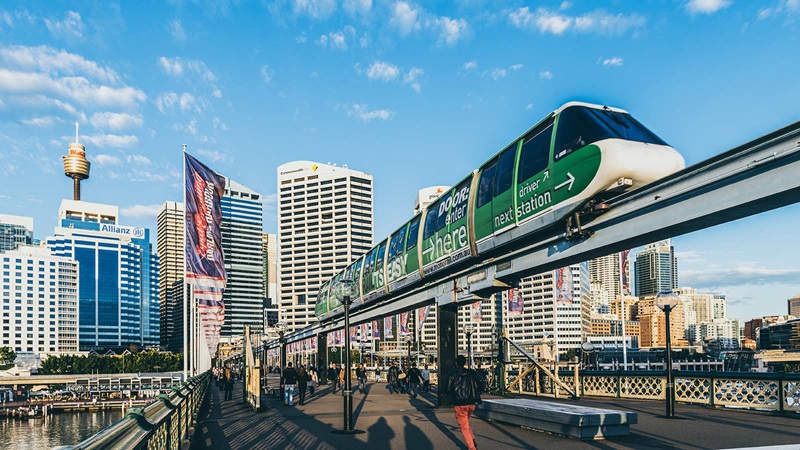Perspectives
Transforming Australian infrastructure delivery
Without adequate transport infrastructure, our cities cannot continue to grow.
Transport links – from roads and rail to expanded and new airports – are the connective links that encourage economic growth, deliver new housing and create new jobs.Although large scale investment programmes can be disruptive, expensive and occasionally extremely political challenging, by and large they deliver an economic multiplier that makes them an essential part of delivering a long-term sustainable vision for Australia’s cities.
We are lucky that our federal and state governments generally sign up to this view.
Compared to other similar developed economies, it is relatively easy here to make a business case for investment – and generally speaking the public is supportive of plans for significant transport links that will unlock new areas and make it easier for them to access jobs and amenities.
Infrastructure Australia has already identified more than $75 billion of potential expenditure over the next decade to deliver key transport programmes – and outside of the public sector, Australia remains one of the most attractive destination for global infrastructure investors.
It is a ‘boom time’ for Australian infrastructure, and we in the construction industry should all benefit from the result. In practice, however, despite this positive investment climate, we do occasionally struggle with the delivery of the projects themselves.
Sydney’s own light rail project is a good example. At the moment it feels like the project is besieged by problems, from cost overruns to legal challenges to delays caused by the unexpected discovery of human remains. Unless you’re intimately involved in the project you can only speculate on what exactly has gone wrong, however it’s pretty clear there have been some fundamental issues around scope and risk allocation.
Linked to that, our construction economy – like several others across the world – is going through an uncertain transition, with companies facing administration, labour challenges, contractor margins weakening and productivity stubbornly refusing to improve.
The bottom line is that it doesn’t matter how much your funding is directed towards infrastructure, if your mechanism for getting it built isn’t operating effectively then you won’t be getting value for money on your investment.
One of the key challenges is around how construction contracts are procured. That procurement process can mean the difference between a successful project and one that ends in recriminations and expensive delays.
Amongst a number of different procurement issues, the allocation of construction risk is the most important. As a risk averse client, public sector bodies are often keen to ensure that they are handing off all of their construction risk to a contractor.
On paper, this looks like a grand idea. The contractor is held to account, the client gets their project built – and if anything goes wrong it isn’t the tax payer who foots the bill.
In practise, however, the reality can be very different.
Earlier this year, one of the UK’s largest contractors, Carillion, went bust. There are many reasons why that happened; but the upshot was that the delivery risk for the company’s many large, public sector projects fell back onto the public purse.
Suddenly local and central government was having to find hundreds of millions of dollars of funding to finish hospitals and other large projects.
It showed that clients cannot just parcel up their risk and pass it on – and that robust, collaborative procurement processes are key.
Collaboration is about having shared objectives and goals – but also about which party is best placed to manage the various elements of risk and opportunity that always exist in a project. Collaboration doesn’t mean the client pays more. In fact it’s often quite the opposite – they pay less.
At Mace, we’ve worked on some of the world’s most complex and challenging transport programmes.
Our experience – from upgrading London’s tube network to delivering new public schools in Australia – has shown us that responsible infrastructure clients ensure their projects are resilient by procuring in partnership with their supply chain, rather than treating them as an adversary.
New South Wales has taken a significant first step, publishing their 10-Point Commitment to the Construction Sector. Key amongst those commitments are points about collaborative working, partnership approaches, reduction in the cost of bidding, and standardised contracts.
If those reforms take hold, I believe that we’ll see a transformative shift in how we build infrastructure in NSW. Not just in transport but across health, education and other sectors.
When the partners on a project work together, you can deliver spectacular results. In the UK, Mace led an integrated delivery team to deliver a £1.5 highways project, working closely with the client and the supply chain to deliver more than £450m in cost improvements and reducing the delivery programme for the scheme by two years.
By aligning objectives across the team, everyone could work to achieve shared goals; rather than spending their time arguing over contractual terms.
I would like to see the initiatives proposed by NSW replicated across the country; and stronger guidance from Infrastructure Australia about how procurement processes should be run to deliver the best possible results.
I also think the onus is on contractors and consultants to be advising clients on new models and approaches to procurement. If we don’t ask, we won’t get. We should constantly be asking: ‘how can I help my client procure in a more intelligent and resilient way?’
Australia’s infrastructure investment wave has the potential to radically transform the country.
It could drive a decade of economic growth that isn’t likely to be replicated in the rest of the developed world – but it will all go to waste if we can’t build what has been funded.
It’s time for all of us to work more effectively together to make sure that doesn’t happen.
I want a better perspective on
















